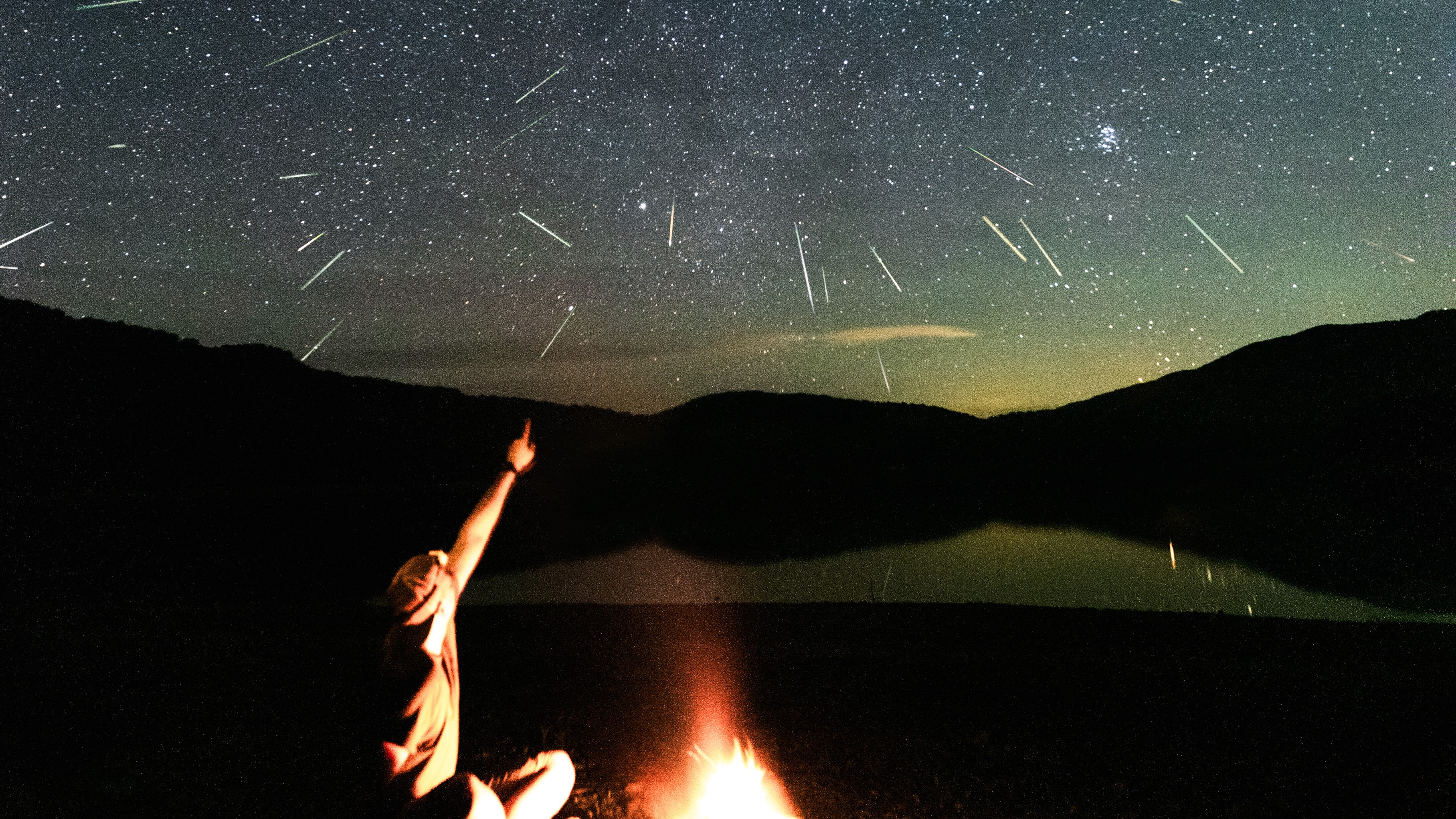
This year's Perseid meteor shower has amazed star gazers around the globe, and Space.com readers have grabbed their cameras to capture the cosmic phenomenon in all its magnificence.
Earth passes through the debris cloud left behind from Comet Swift-Tuttle, which causes the annual light show. The peak of this year's meteor shower coincided with a much more dimly lit moon compared to last year, when the full moon significantly decreased visibility. This year, the result has been a vibrant display of shooting stars for anyone searching them out.
If you haven't seen the Perseids yet, don't worry. Even though we're past the peak, Earth will still be floating through pockets of space dust until about August 24.
Related: Perseid meteor shower 2023 thrills stargazers around the world. See their amazing photos.
In the photograph below, photographer John Turner captures the Perseid against a rising crescent moon from Franklin, North Carolina, in the eastern United States.

A short night hike on August 13 to an eastward facing observation points high in the mountains gave me the once in a lifetime opportunity to be a part of this beauty. This was my first time with astrophotography. I’ll always consider the view I was given a gift from the very universe I was allowed to image with the camera.
John Turner
In his own words, "facing north/northeast the red moonrise gave a solar clue that sunrise wasn’t far behind. My excitement with the shutter release captured 6 or 7 Perseid meteor streaks traveling in different directions within the twinkling starfield background in a single six second exposure."
Turning his camera east/southeastward, Turner was also able to capture this shooting star above the mountain ridge.
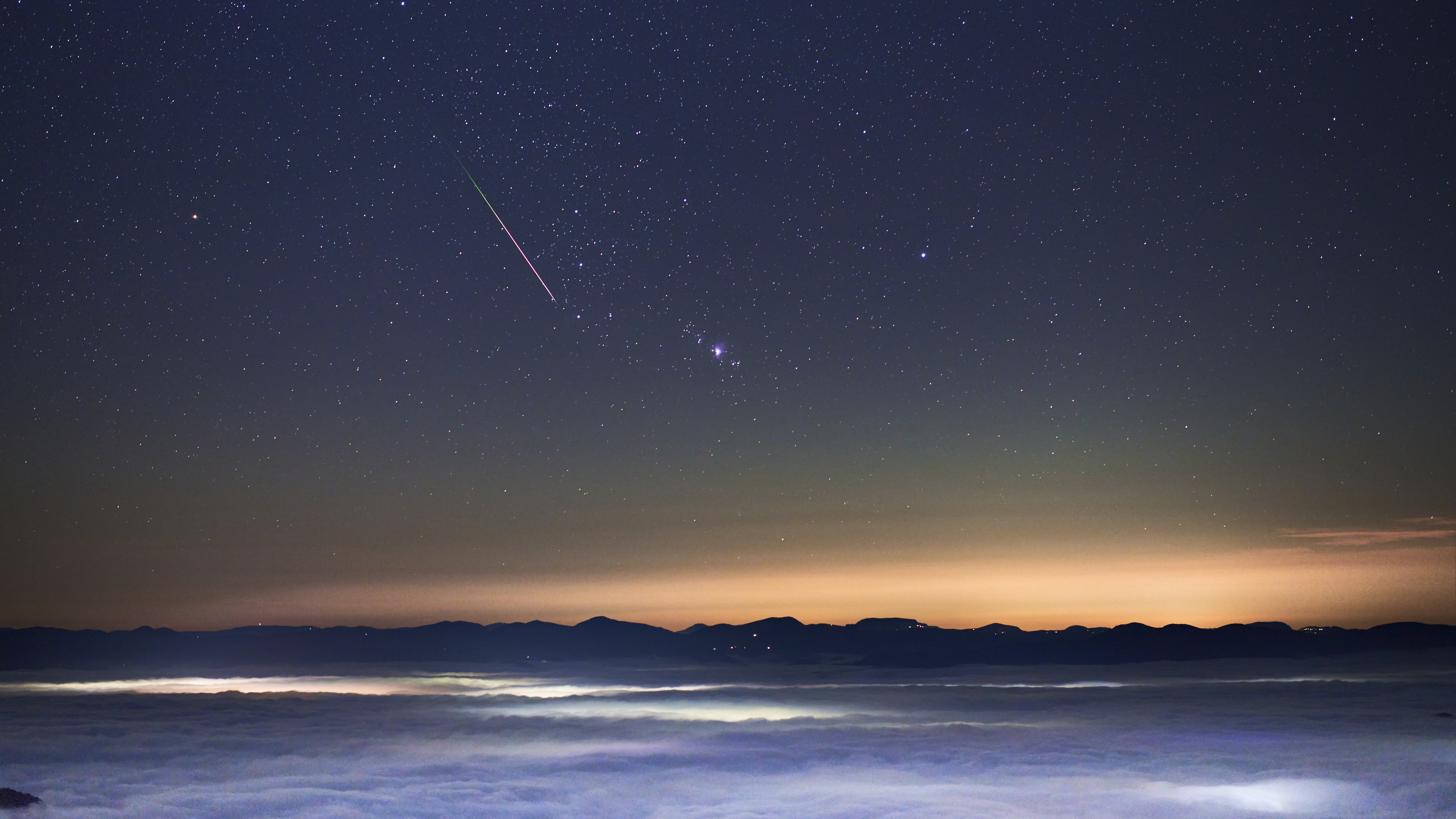
According to photographer Michele Aucello, who shot this boat near Glen Haven, Michigan on Aug. 12, the name of this photograph is "Wynken, Blynken, and Nod." The boat stands next to some trees, with the bright green and white streak of a meteor falling in the sky above.
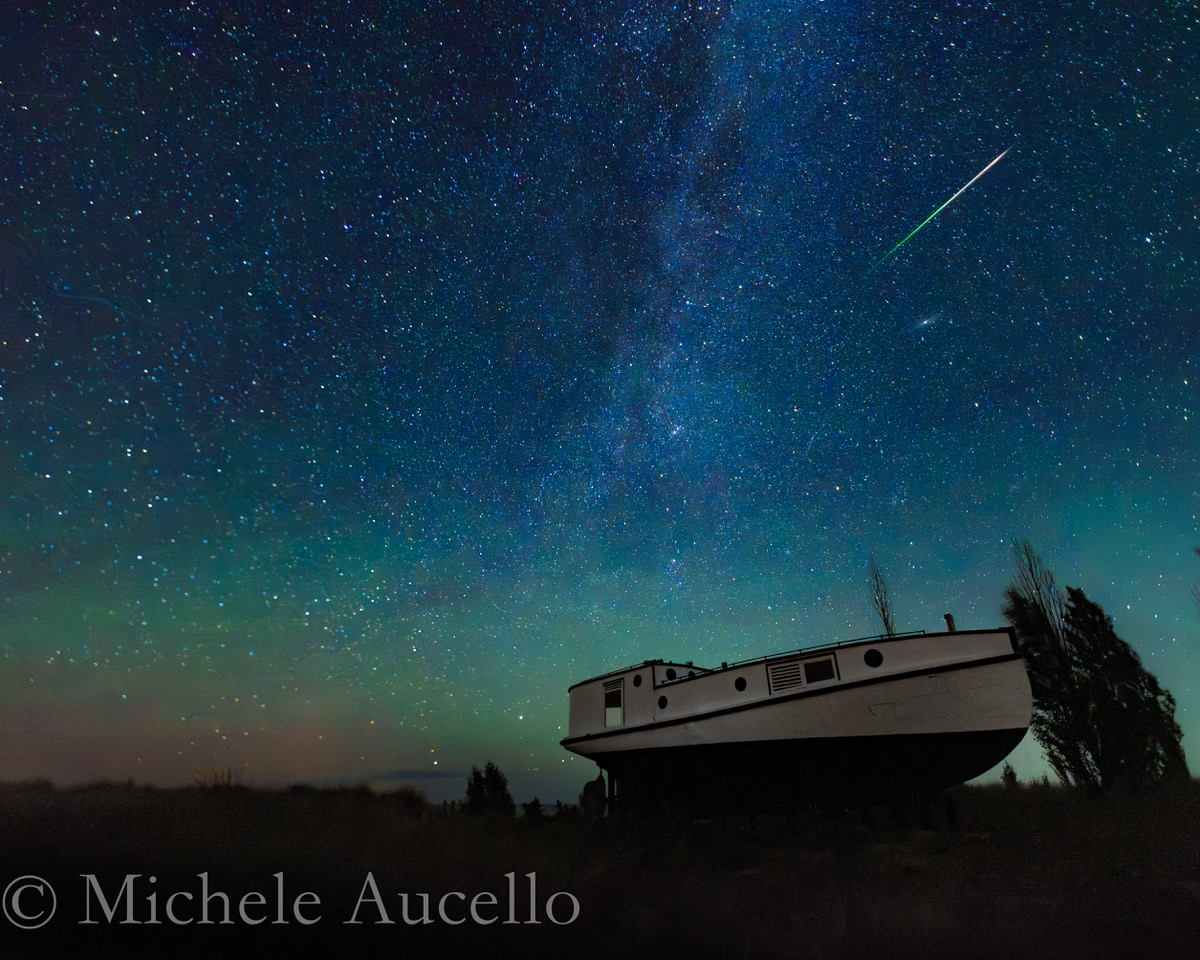
Aucello also pointed her camera toward a barn in Glen Haven, capturing meteor streaks above the dimly lit white building.
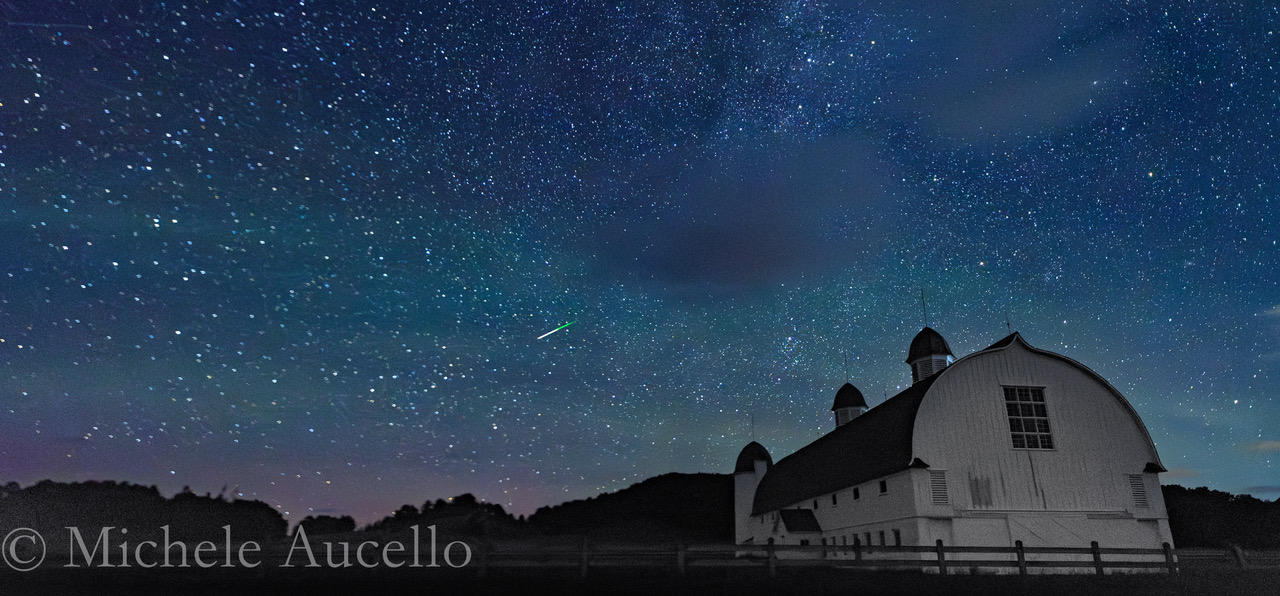
Another, of the same barn, highlights the brilliant Milky Way in the night sky, riddled with stars.
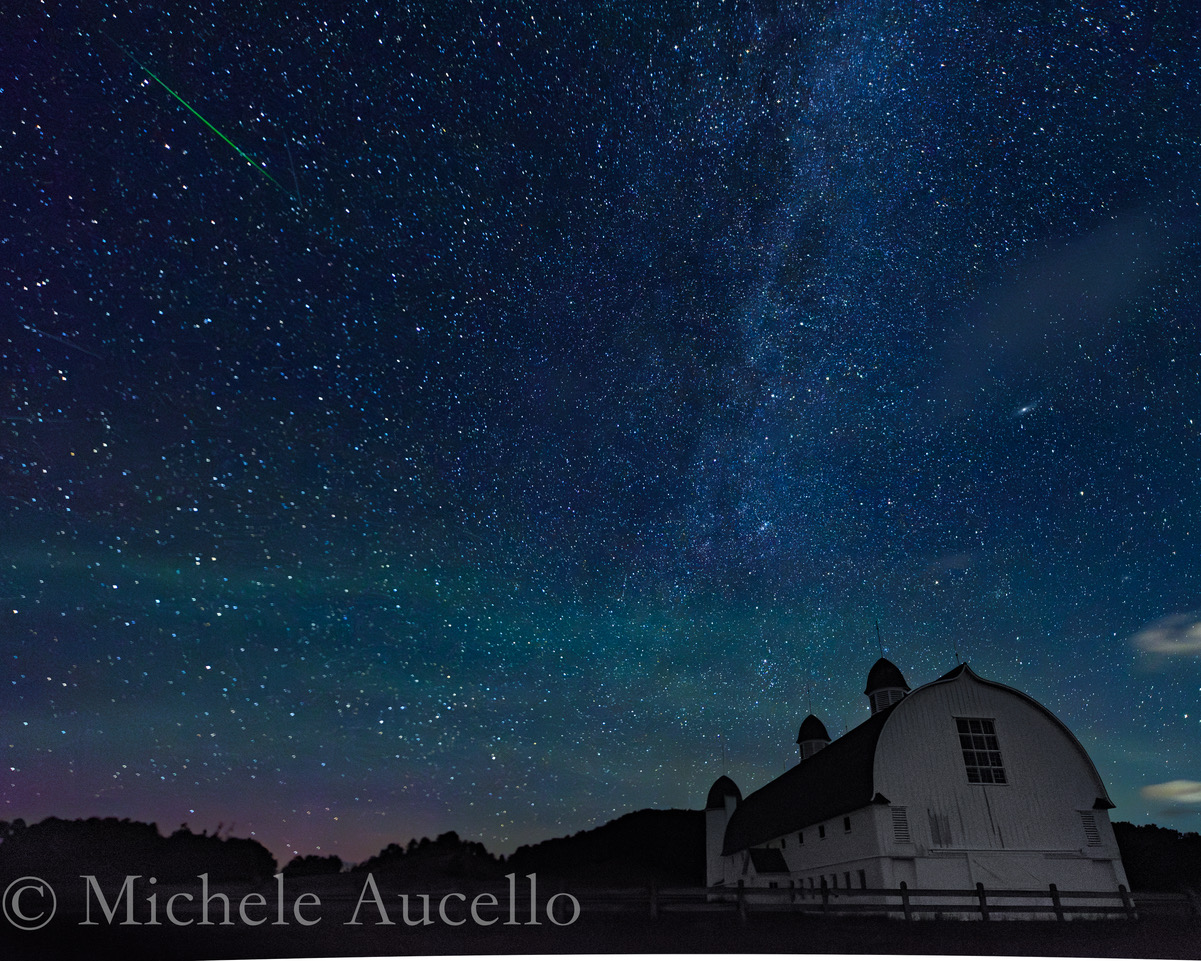
This stunning view of the Milky Way was taken by Jon Bertsch on Aug. 12, north of Truckee, in the Sierra Nevada mountains. He says, "there's always a sense of awe when you can watch meteors streak across the sky and view the Milky Way. We were lucky this year with the moon rising in the early morning so that the skies were dark enough to enjoy the show. I love spending a few hours under the stars and getting away from the city lights."
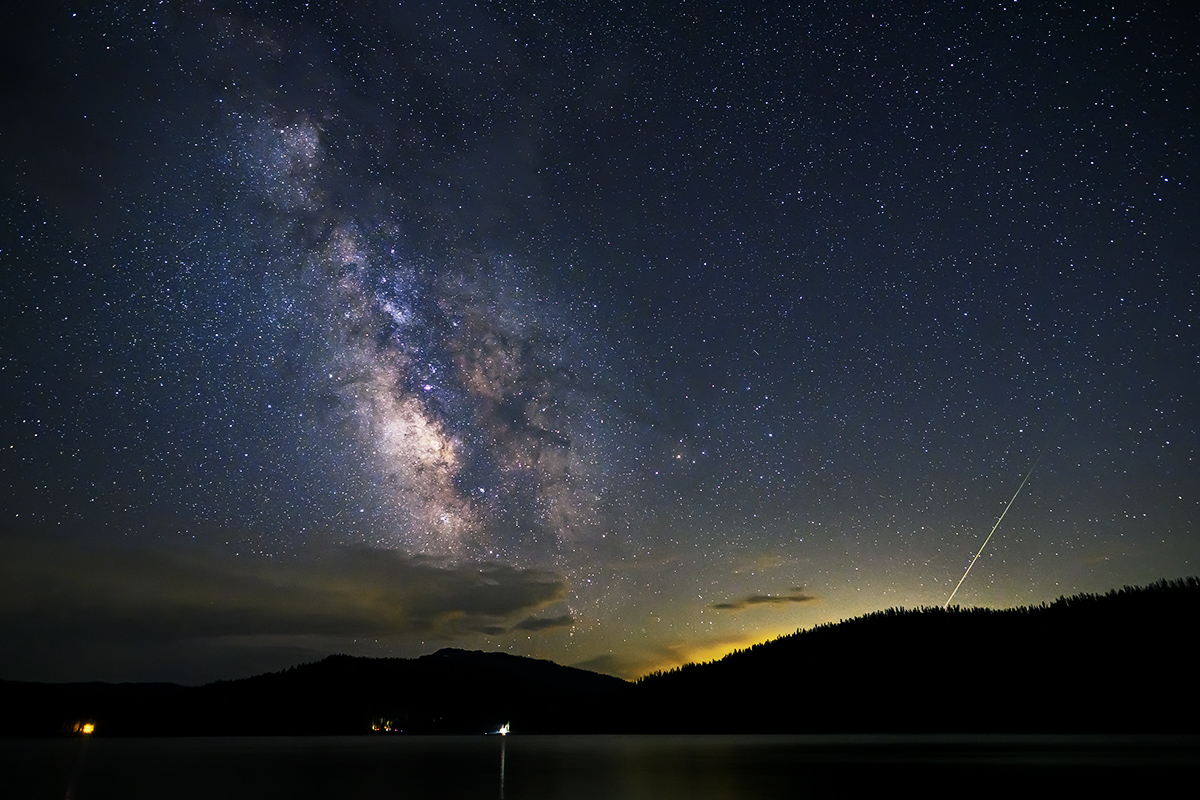
Capturing the stars' beauty in another part of the world, Fotis Mavroudakis shot this image on Aug. 13, from the mountains of Drama, in northern Greece.
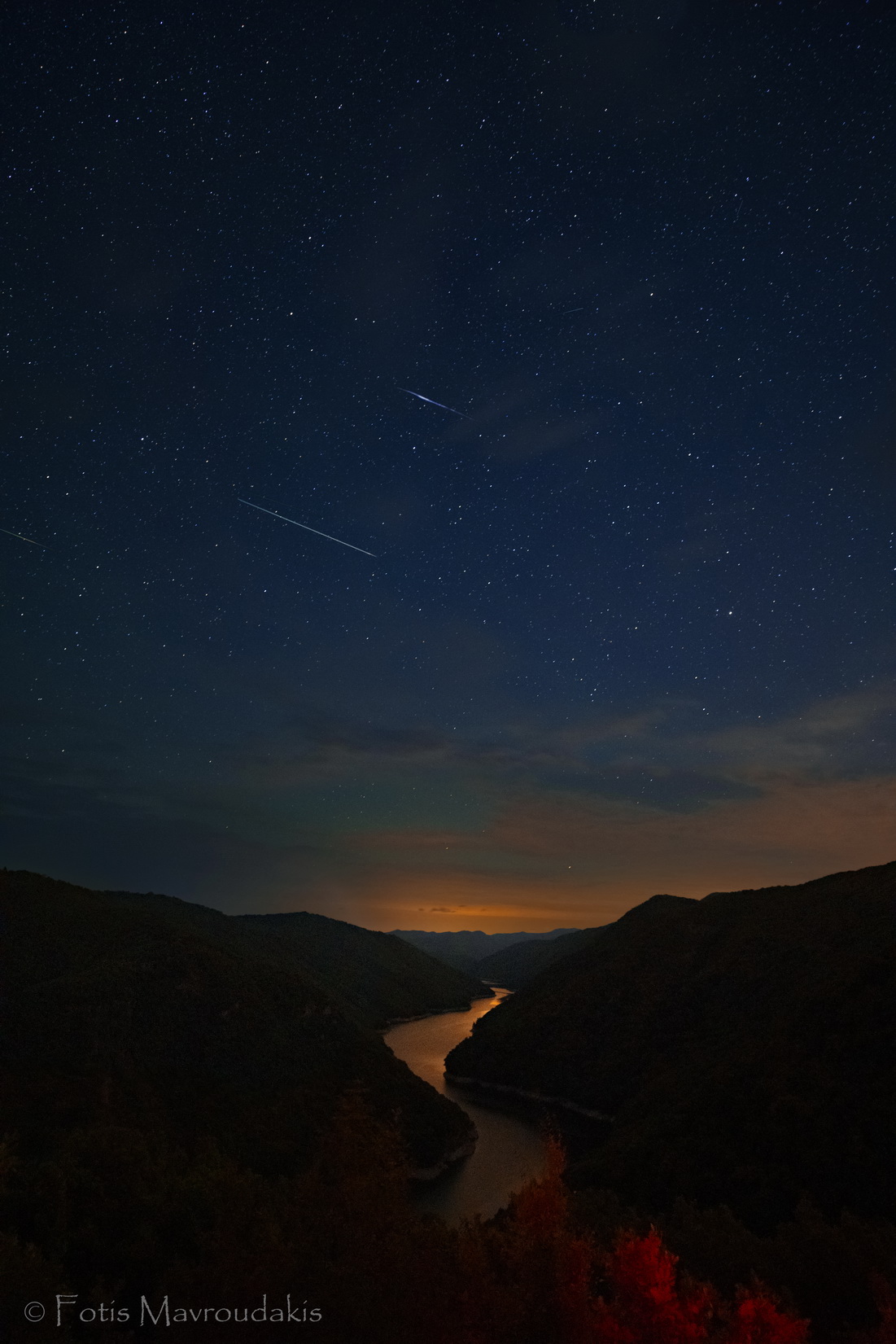
"I dedicated several hours to capturing the celestial spectacle," Mavroudakis told Space.com.
"The clear night conditions allowed me to create an image that not only highlights the meteor's brilliance but also showcases the grandeur of the cosmos. The meteor's vibrant trail and the tranquil expanse of the night sky combine to create a sense of wonder and fascination."
Submissions from photographer Nick Boris took extra dedication on his part. As Boris told Space.com, "I spent 24 hours being wide awake as I photographed over 70 meteors and built this composite of 45 meteors collected Saturday evening [August 12] into the morning."

Another from Boris features a total of 45 meteors falling through the sky, in a composite he made with a piece of driftwood in the foreground.
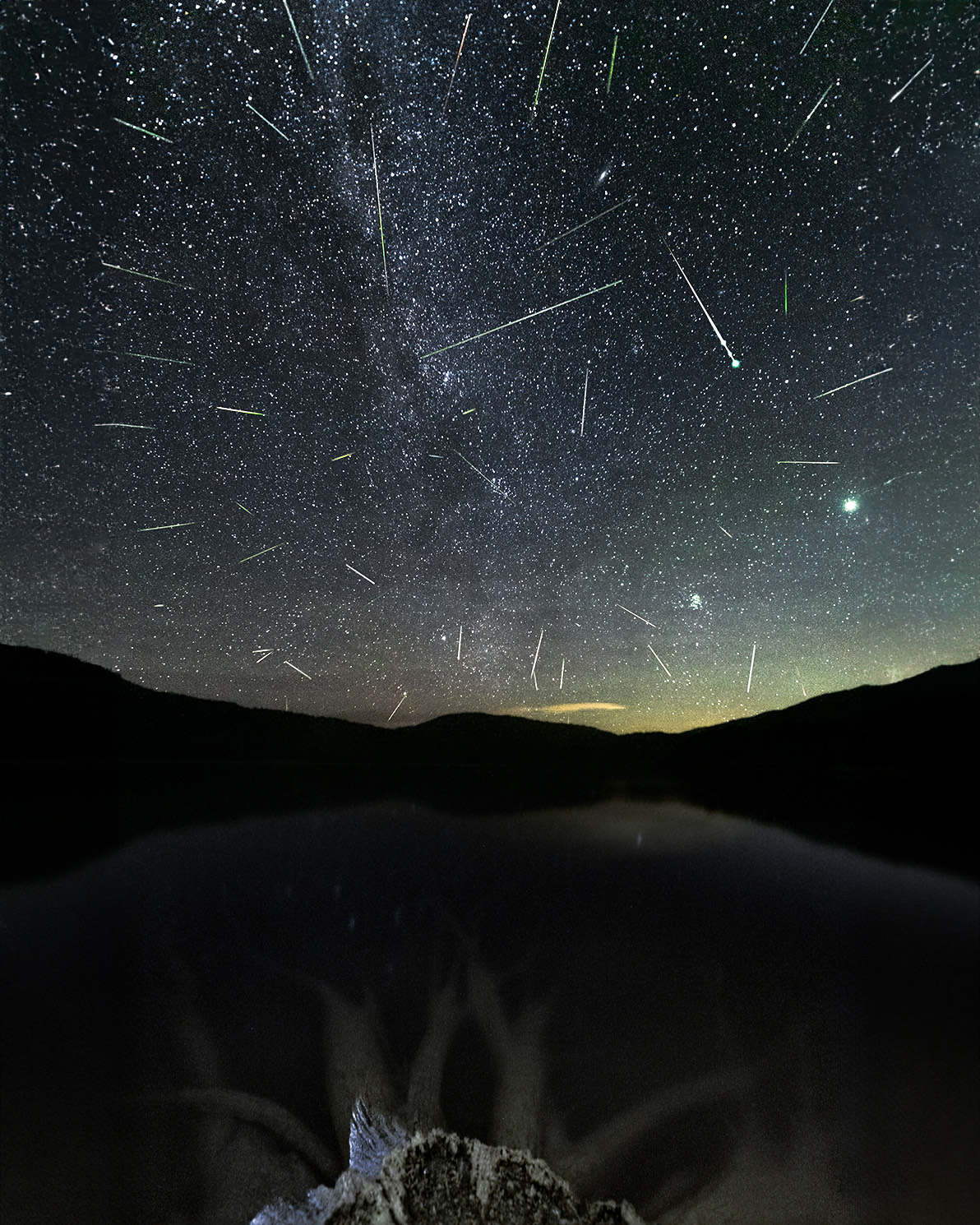
This photo, shot further away than his previous images, shows Boris standing next to his campfire, gazing above the trees at the streaks of stars falling in the sky.

The Paul and Jane Meyer Observatory in Clifton, Texas, was the perfect place for photographer Melanie Illich to set up her tripod.
"I watched the meteor shower while laying on a blanket," she told Space.com. "As it unfolded I was in awe of the experience ..like I was getting to experience something so special that many people aren’t aware of it. You realize we are a tiny part of an incredible universe."
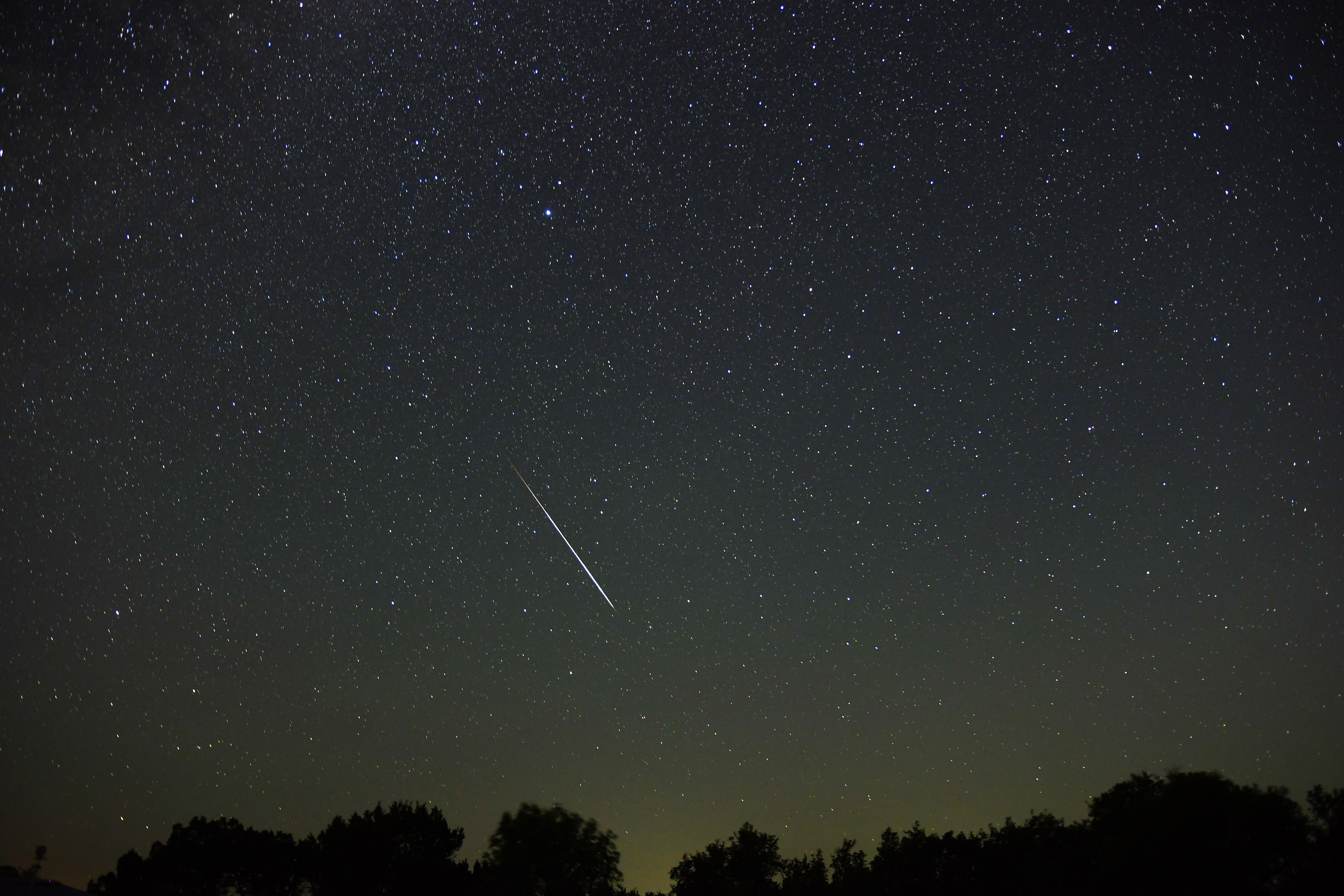
Placing the observatory in the frame, Illich managed to capture another meteor, and perhaps something extra as well.
"I believe [this photo] also shows the Hartley Comet next to the meteor," she says.
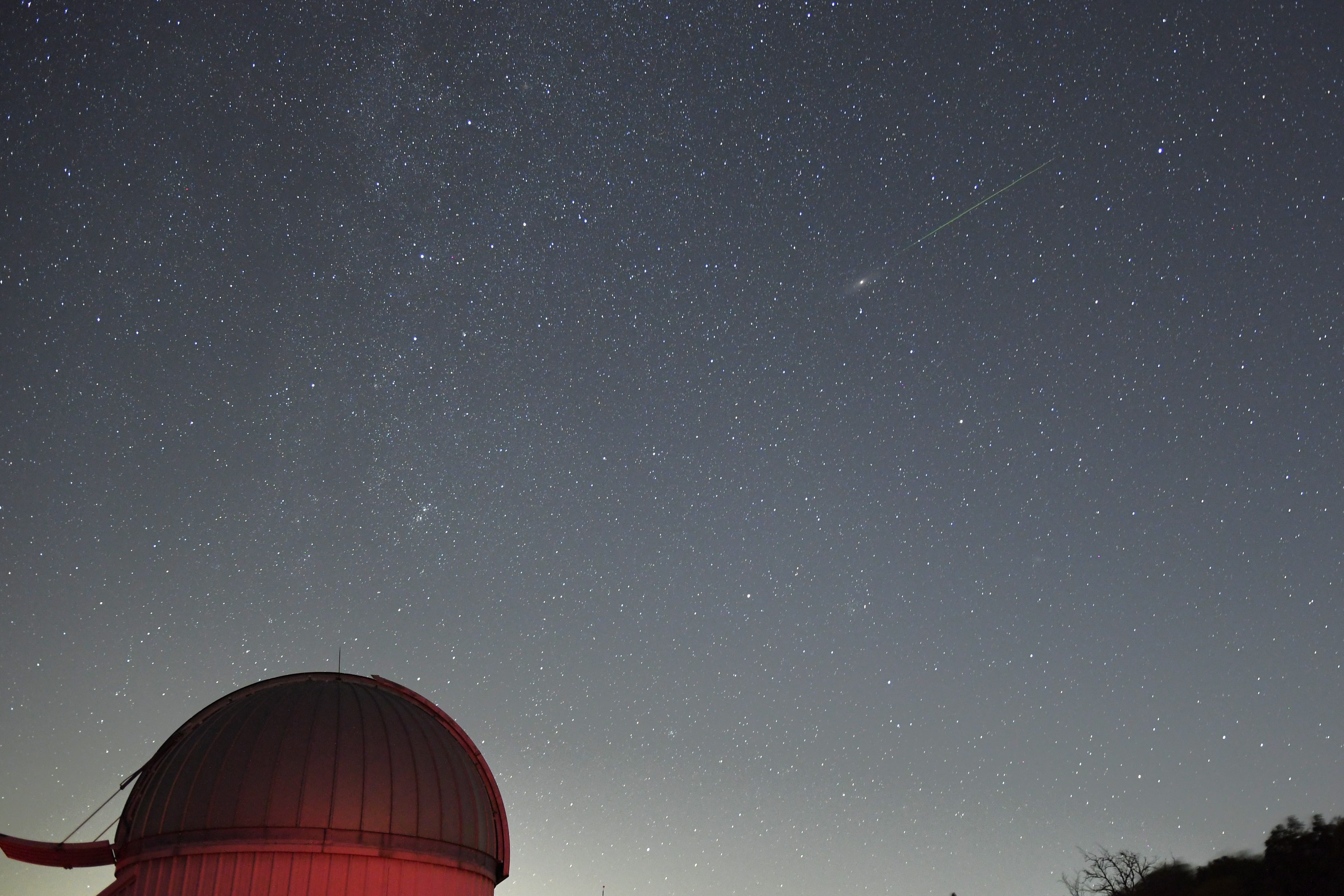
The Perseids will be around until around the end of the third week of August. So, there's still time to go out and capture your own photographs of the meteor shower. Check out Space.com's best cameras for astrophotography and our how to photograph a meteor shower guide for some tips and advice.







